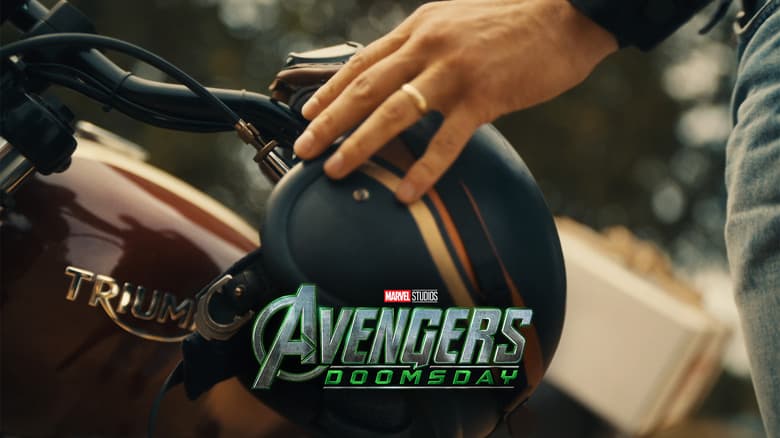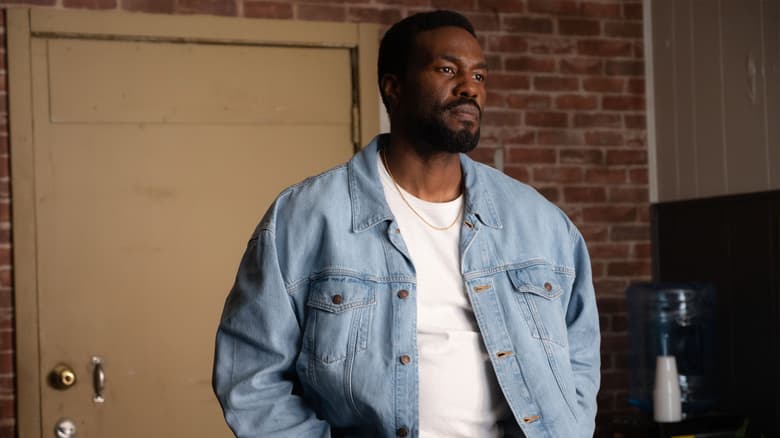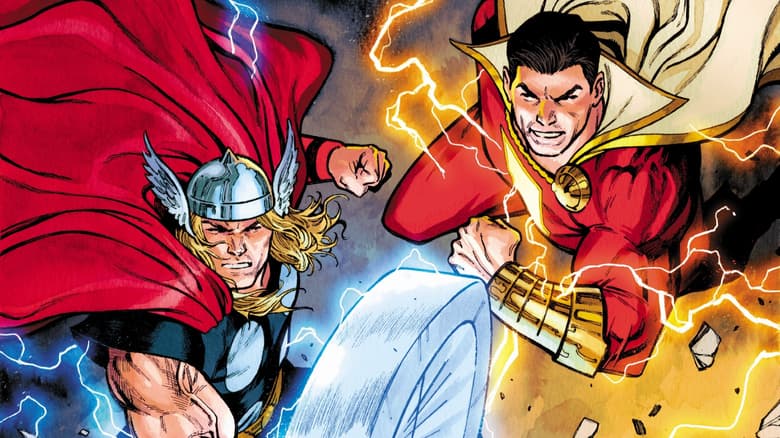10 Incredible Steve Ditko Pages
Look through ten pages that illustrate Ditko's unforgettable greatness!
When it comes to the art of Steve Ditko, the adage "a picture is worth 1,000 words" feels reductive, inadequate—a significant underestimation. His work was engrossing and all-encompassing; he captured the Marvel Universe in manners never seen before.
To celebrate the brilliant work he did for the House of Ideas, we've selected ten pages that demonstrate Ditko's incredible imagination and the skill he had to bring it all to life.
AMAZING SPIDER-MAN #1, page 1
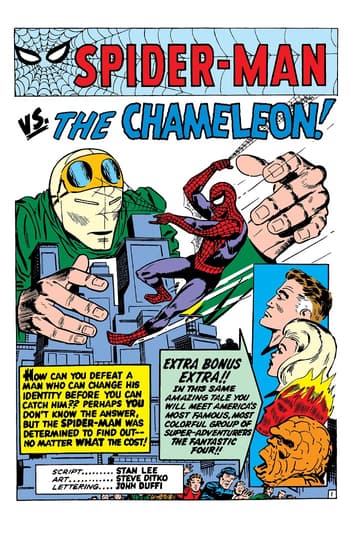
This image shows the first appearance of the Wallcrawler’s introductory Super Villain, the Chameleon. The blank, otherworldly face is striking; pale, nearly devoid of recognizable features, and expressionless, the criminal puts you immediately ill at ease.
Then you realize Chameleon’s size. Not only does he dwarf Spider-Man, but he seems to lord over New York City itself. In fact, he looks poised to use the Big Apple as an impediment between himself and the hero.
The layout also isolates Spider-Man’s possible allies—the Fantastic Four—in a box in the lower right. The subconscious result conjures the idea that even with the FF in the book, the Webslinger will likely be facing the malcontent all on his own.
AMAZING SPIDER-MAN #24, page 1

First of all, a Super Hero visiting a therapist must have been a pretty incredible concept in the 60’s. Beyond that, the phantasmal images of Spider-Man’s enemies bedeviling the hero give the page a pop that puts this on the list.
As the therapist looks impassively on, unable to see what we can, Spider-Man appears to be literally thrashing on the couch. Even though no villains have actually arrived to throw punches or kicks, Spidey nonetheless continues to be rocked by the psychic wounds of their past battles. It all adds up to an incredibly arresting visual.
AMAZING SPIDER-MAN #33, page 2
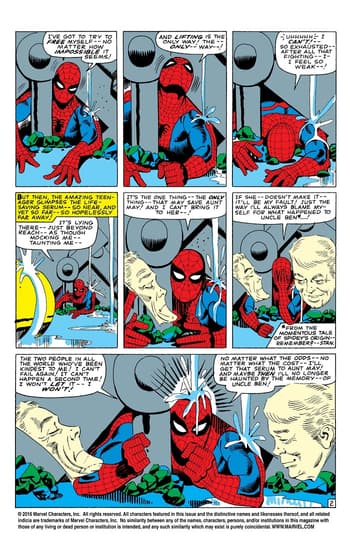
Any of this issue's first five pages could be on this list.
In the conclusion of arguably the most iconic Spider-Man story of all time, the Webhead finds himself trapped beneath an entire building’s worth of debris. Page five, where Spidey throws off the enormous weight, stands as a tremendous moment of catharsis and an ode to the hero’s indelible spirit. But page two is extraordinary in its own right.
With simple half-face specters of Aunt May and Uncle Ben, Ditko illustrated the essential nature of why Spider-Man had to be Spider-Man during that era; the twin ghosts of guilt and responsibility would not let him simply lie down and give in.
AMAZING SPIDER-MAN ANNUAL #1, page 16
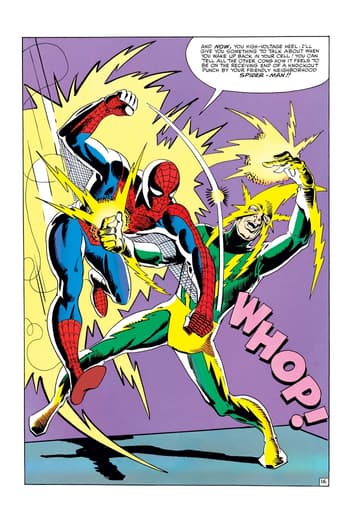
Sometimes art, even removed from context, can just be incredible to look at, and this confrontation with Electro fits that bill exactly. Battling in front of a sparse background, the enemies look titanic. Without the points of reference to give us indications of size, they might as well be giants battling miles above the Earth. And that grand scale fits the tone of this piece perfectly.
STRANGE TALES #116, page 4

While a lot of Ditko’s most distinctive illustrations of Doctor Strange’s psychedelic world-filled full pages, this example adhered to the classic nine panel grid.
Ditko captured the incredible nature of Strange’s world without sacrificing a single panel of storytelling, leading to something economic and eye-popping all at once.
STRANGE TALES #146, page 1
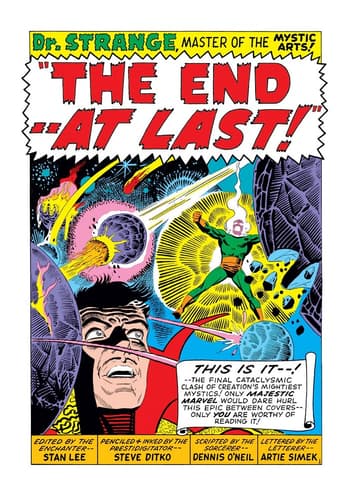
In an interesting inversion of a comic book troupe, this first page of STRANGE TALES #146 places Doctor Strange in the menacing villain slot. A large part of his massive face in shadow, mouth half open, he appears to be mocking the seemingly captured Dormammu.
It sets up readers for the incredible reversal to come, where Dormammu shows that no man—not even Doctor Strange—can afford to be arrogant enough to think himself the magical monster’s better. For this brief moment, though, we get to see Strange as he must appear to the enemies he's vanquished.
STRANGE TALES #146, page 6

Breathtaking. Strange, in the forehead, can do nothing but cower as Dormammu batters Eternity itself, energy bursting forth in all directions.
In the some ways, the Marvel Universe remained nascent at this point in its history, but Ditko took that opportunity and created an incredible cosmology where a magical being from a dark dimension could lash out at the physical embodiment of Eternity.
TALES TO ASTONISH #62, page 13

The sight of the Jade Giant restrained has the power to arrest.
Depicted by Ditko’s hand as slumped and ashamed, this Hulk shares little with the unstoppable creature he was just an issue before. The raging monster that sent tanks tumbling and punched holes through the U.S. military stands broken. Empty, alone, the Hulk is at the mercy of people who understand only how to hurt him, not help him.
TALES TO ASTONISH #66, page 13

Pulling the trigger on ol’ Green Genes is a good way for a villain to get their bones mashed into a fine paste. However, Ditko’s Hulk, again, seems so...unimposing here; not just in size, but also in bearing. He almost seems childlike in his presentation. Stooped, sad, being led around by another person.
To this version of the Hulk, the gun-like instrument, and the shadow wielding it, seem a very dangerous proposition indeed. And it adds up to create an unsettling scene as we start this story.
TALES OF SUSPENSE #47, page 9
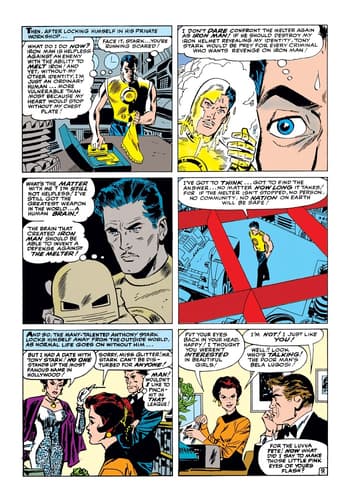
This is another prime example of Ditko’s skills with storytelling in panels, not just splash pages.
The image of Tony Stark’s face exposed as his armor melts away cannot help but pull your eye. Even though the event itself has passed, you can still understand why Stark’s forehead is drenched with sweat at just the memory.
Then the image, from above, of Stark pacing by himself. Not just alone, but diminutive. The art makes us feel as if the problems Tony wrestles with in that moment are crushing him, making him small, secluded, anxious.
Finally, we cut to the office where his coworkers seem entirely unaware of Stark’s torment. This heightens the sense of isolation and the burden that Iron Man carries. The lack of dynamism in the panels also convey the mundanity of their lives, and how far being Iron Man has taken Stark from such an existence.
From galaxy-shattering dynamism, to quiet moments of solitude, Ditko was—and always will be—one of the all-time greats.
The Daily Bugle
Can’t-miss news and updates from across the Marvel Universe!
